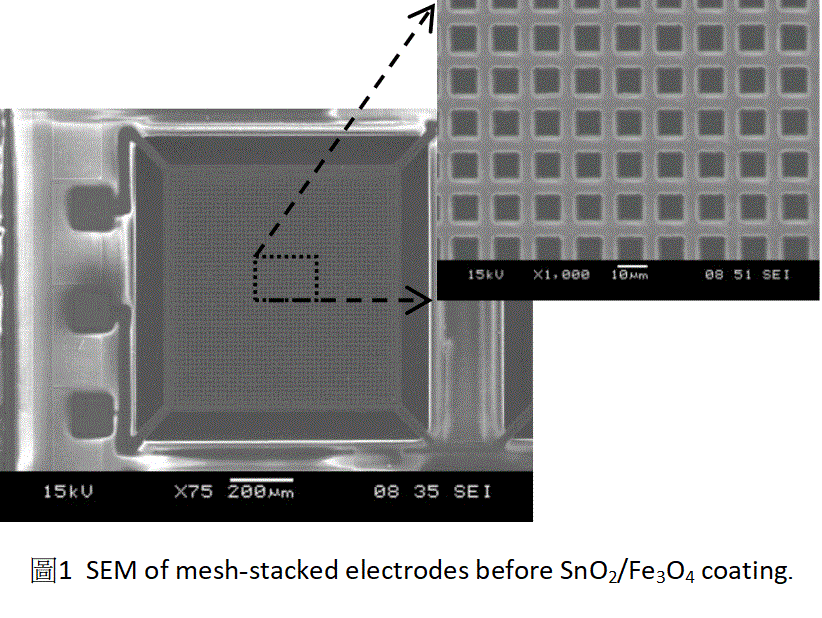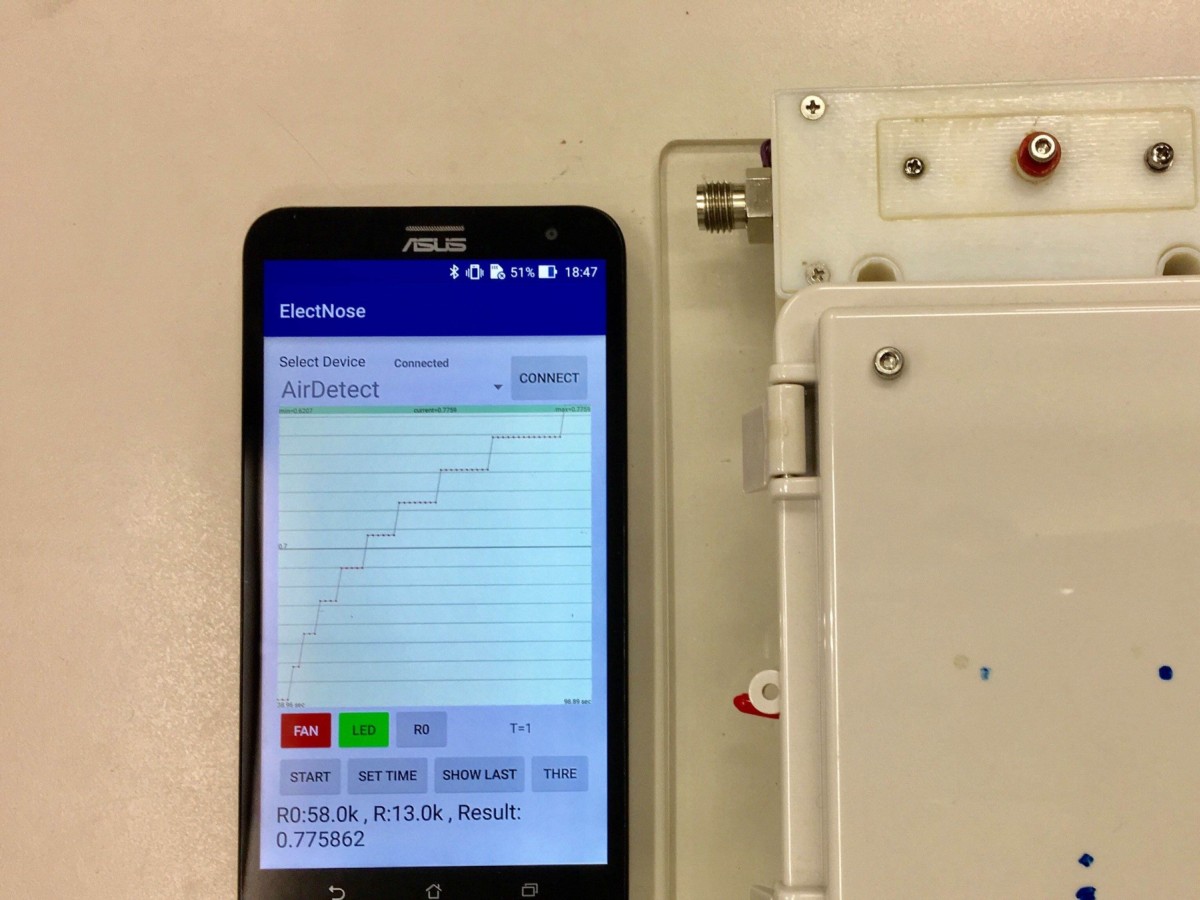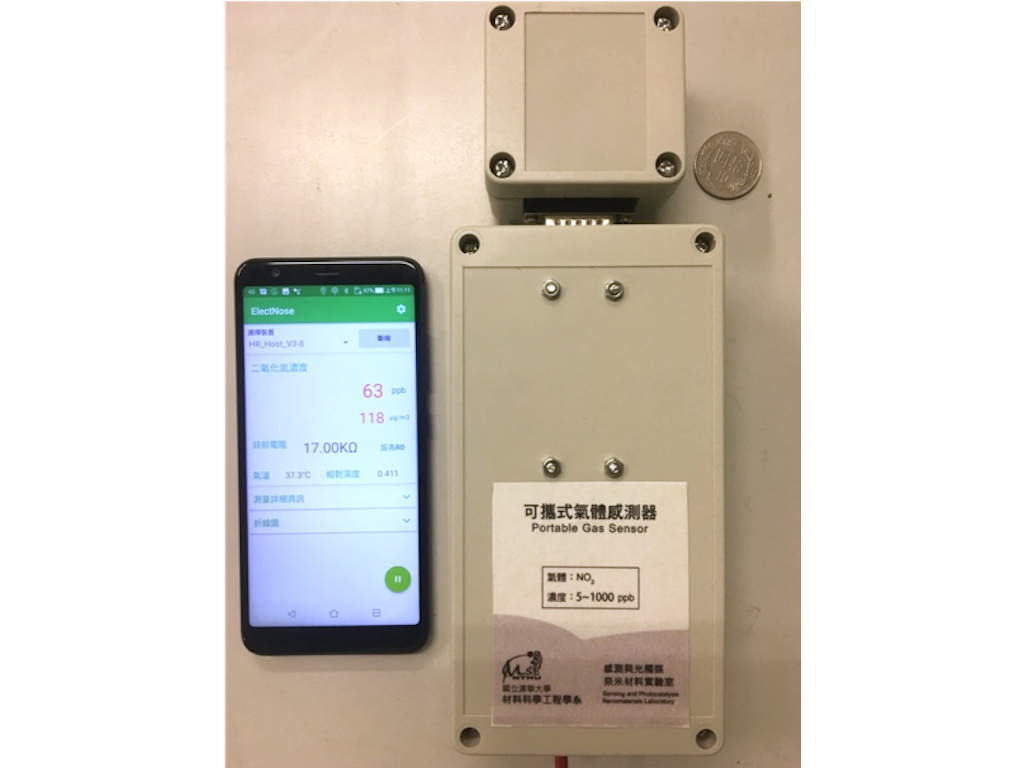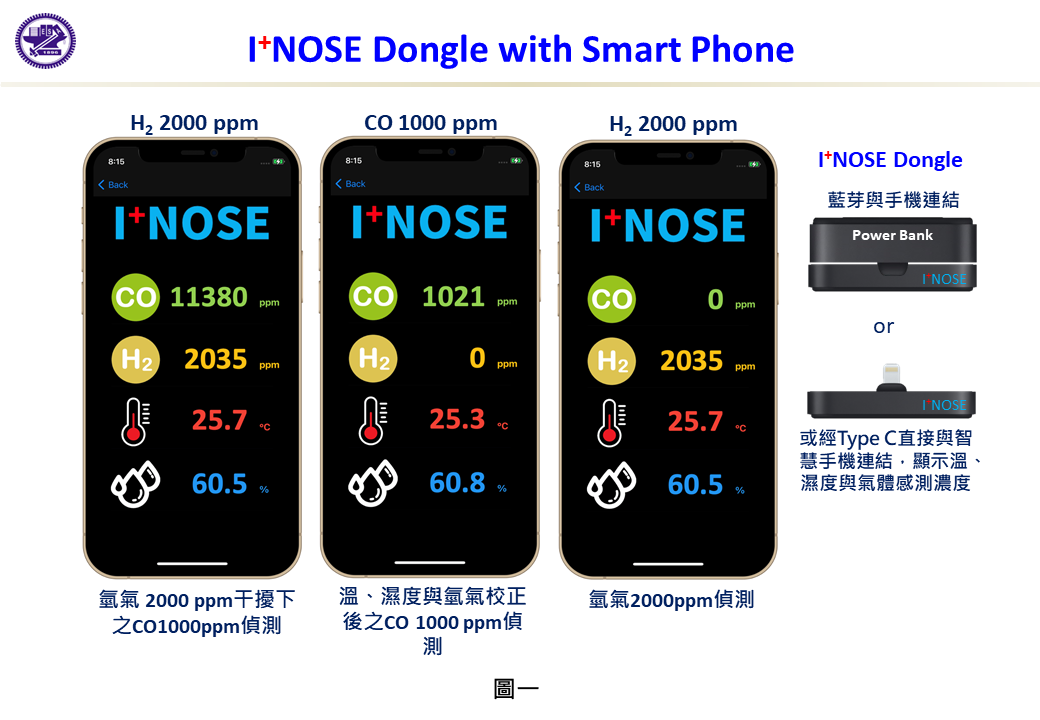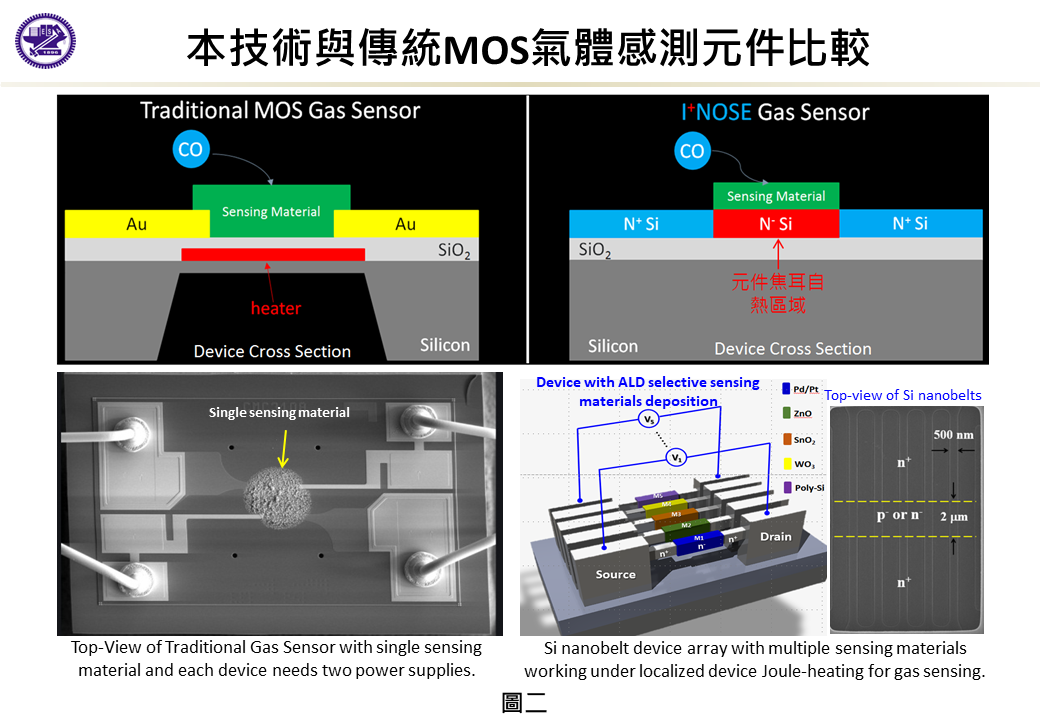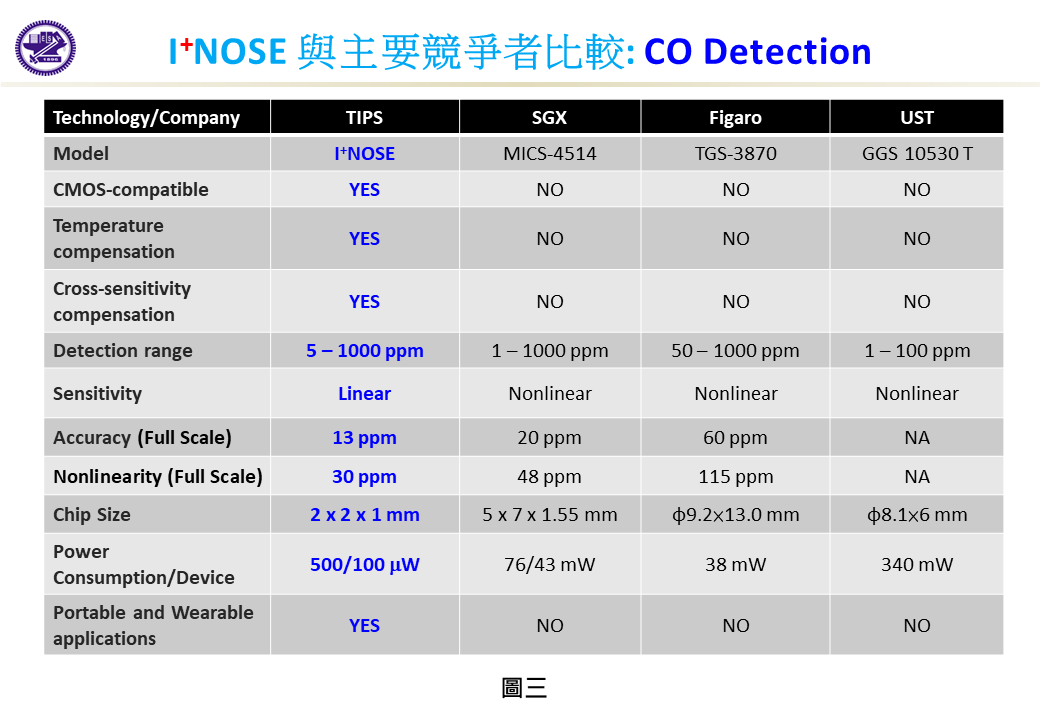| Technical Name | 智慧型可攜式極低功耗氣體感測晶片與應用(I+-NOSE) | ||
|---|---|---|---|
| Project Operator | National Yang Ming Chiao Tung University | ||
| Project Host | 許鉦宗 | ||
| Summary | A technique compatible to IC process has been presented to prepare gas sensing chips the lightly-doped region of nanoelectronic devices are grown with different sensing materials to form a gas sensor array. During gas sensing, individual nanodevice was Joule-heated, reducing power consumption to microWatts/device, solving the current high power consumption problem. With self-calibration of temperature, humidityinterfering gas, problems like cross-sensitivity, quantification, specificitysensitivity are solved. A demonstration of I+Nose with smart phone was presented for CO detection. |
||
| Scientific Breakthrough | I+NOSE gas sensor chip is the only IC-compatible product. Its response is completely linear in the 5~1000 ppm CO detection range. The temperaturehumidity are calibrated with sensors on the same chip,it is the only product that can detect two gases at the same time. Sensor array provides a potential of simultaneous detection of multiple gas speciesperform cross-interference compensation. The chip area of the I+NOSE is 1/8 of the smallest product on the market,the power consumption is 1/76 of the smallest product currently on the market. |
||
| Industrial Applicability | This technology demonstrates goals currently pursuit by gas sensing companiessmart device companies. Due to the array-type sensing structure, I+NOSE detects multiple gases at the same timeperform cross-interference correction for different gases with high sensitivityspecificity. With the smallest chip area, the smallest power consumptionlinear responses, the applications cover environmental gases detectionwill be applied to the detection of human breath diseases detection, incarnating an aspect of the AIoT smart life. |
||
| Matching Needs | 天使投資人、策略合作夥伴 |
||
| Keyword | Intelligent gas sensing Semiconductor process compatible Nanoelectronic Device Device localized Joule heating Atomic layer deposition Gas sensor array Temperature/humidity/interference gas calibrations smallest die size Lowest power consumption AIoT Applications | ||
- sort897@gmail.com
other people also saw

